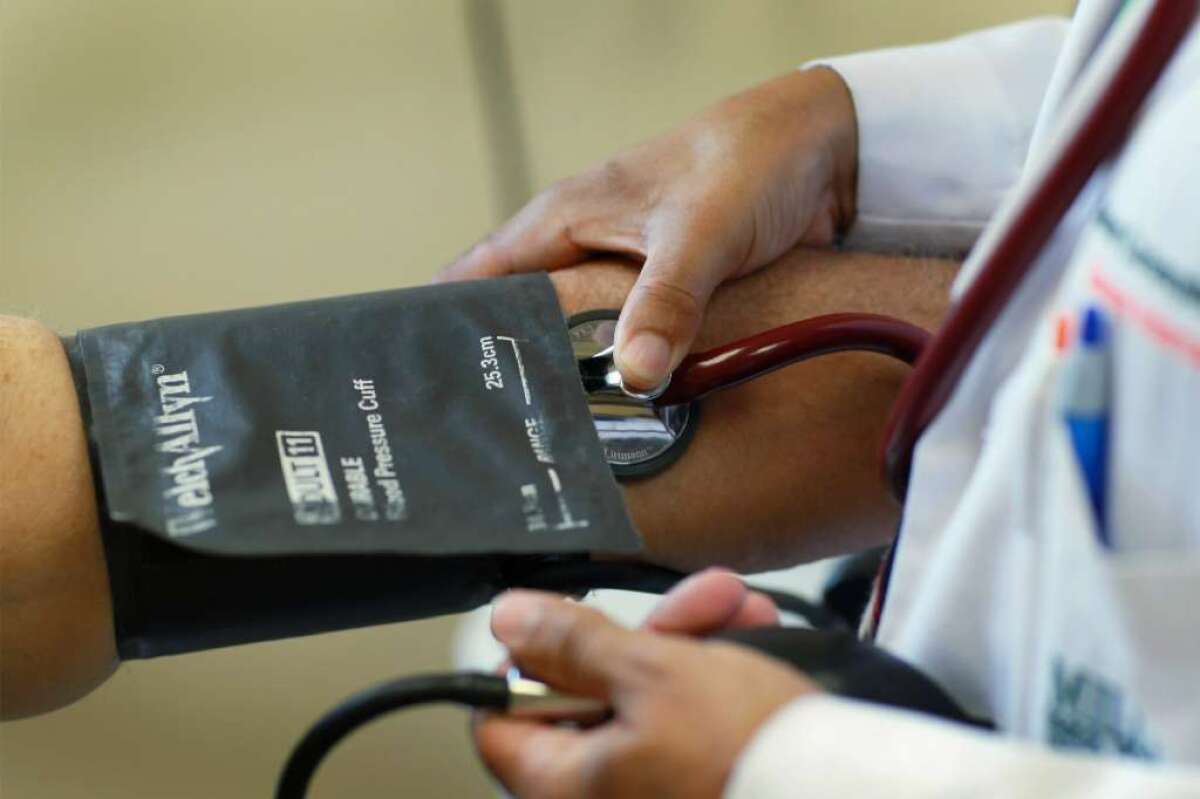Financial incentives prompt doctors to step up care for patients

How do you get doctors to do a better job of controlling their patients’ high blood pressure? Pay them, according to the results of an unusual clinical trial.
For a typical doctor treating 1,000 patients for hypertension, extra payments of $1,648 were enough to get blood pressure under control – or at least get doctors to prescribe the right drugs and recommend the right lifestyle changes – for 84 additional patients. Those payments (distributed over 20 months) amounted to about 1.6% of the doctor’s annual salary.
It may not sound like much, but apparently it was enough to make a difference. When the clinical trial was over and the payments ended, doctors stopped making the extra effort to control their patients’ blood pressure and things pretty much went back to the way they were before the experiment began. The trial results were published in Wednesday’s edition of the Journal of the American Medical Assn.
The researchers who set up the trial were careful to point out that the financial incentives they offered weren’t meant to “coerce” doctors to pay more attention to their patients with hypertension. Rather, they hoped the money would help them overcome “clinical inertia” and “increase their interest in” managing their patients’ blood pressure, according to the study.
The research team recruited doctors from 12 Veterans Affairs outpatient clinics to test the power of financial incentives. They focused on high blood pressure because it’s a common chronic condition that requires doctors to monitor patients carefully and communicate with them effectively. Even modest improvements in blood pressure translate into fewer cases of coronary artery disease, congestive heart failure, kidney failure, stroke and other health problems.
Since drugs don’t always bring high blood pressure under control on their own, the doctors were also judged on how well they followed hypertension treatment guidelines. One group of doctors received individual payments if they improved in their handling of patients’ blood pressure; another group received payments if their entire practice improved; a third group was eligible for individual and group payments; and a fourth group served as a control and didn’t get any financial incentives.
In the raw analysis, doctors in the control group did not improve over the course of the trial – 86% of their patients had their high blood pressure under control or were receiving the appropriate care at the beginning and the end of the study.
But the doctors in the other three groups started out worse than that, and they all got better. Doctors eligible for individual payments increased the proportion of patients getting proper care from 75% to 84%; those eligible for practice-wide payments increased it from 80% to 85%; and those eligible for both payments went from 79% to 88%.
All four groups of doctors did a better job of managing their patients’ blood pressure medications over the course of the study. The improvement among doctors receiving incentive payments was roughly the same as for doctors in the control group, so the researchers couldn’t say that financial incentives made a difference.
One clear benefit of the incentives was that they prompted doctors to check for feedback from study coordinators that was posted to a special website -- 66% of doctors who were eligible for extra payments logged on to see the reports, while only 5% of those in the control group did so.
Return to Science Now.







